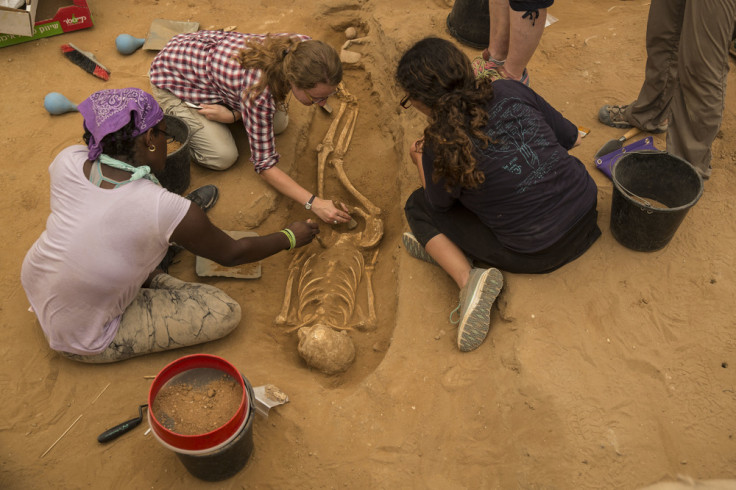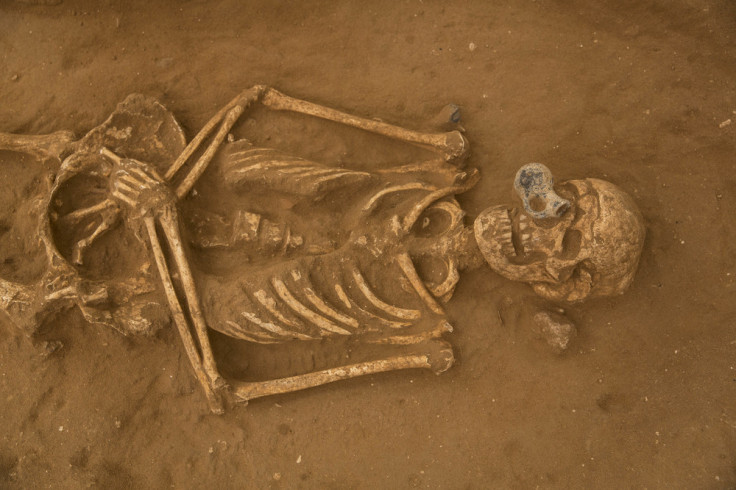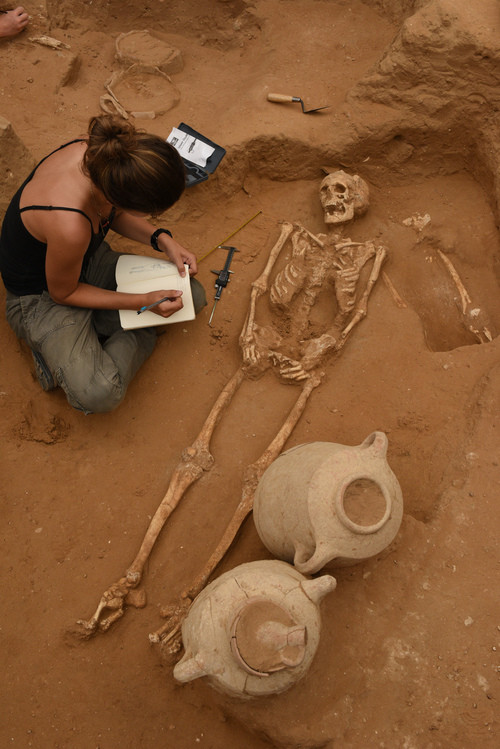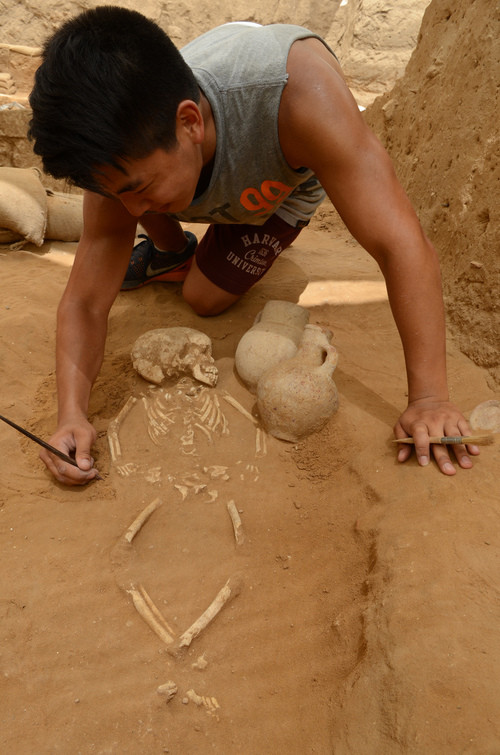Rare Philistine cemetery discovered in Ashkelon could reveal origins of Hebrew Bible villains
The major discovery could shed light on why this community of people relocated to Israel.

In what is being called a first-of-its-kind find, archaeologists have discovered a cemetery belonging to the Philistines in southern Israel. The huge grave site which is estimated to be around 3,000 years old was found in the ancient city of Ashkelon after almost 30 years of research in the region.
Up until now, very few traces of the Philistines were discovered that could shed light on their culture and traditions, but the new excavation made by The Leon Levy Expedition to Ashkelon has uncovered more than 211 individuals' graves dating from the 11th to 8th centuries BC.
"When we found this cemetery right next to a Philistine city, we knew we had it," said Dr Daniel Master, an archaeologist from Wheaton College in Illinois and co-director of the expedition. "We have the first Philistine cemetery that's ever been discovered."
While there is mention of the Philistines in ancient Babylonian, Egyptian and Assyrian texts, the most prominent source of information about the civilisation has been the Hebrew Bible which mentions the people as being the "archenemy of ancient Israel". Goliath, who was sent to fight against David was said to be a Philistine and so was Delilah, who cut off Samson's hair to weaken him.
"The victors write history," said Master. "We found these Philistines, and finally we get to hear their story told by them rather than by their enemies."
Ceramics, jewellery and weapons found at the site are expected to reveal more about their customs and offer a better understanding of how they came to settle in Israel after crossing the Aegean Sea. "After decades of studying what Philistines left behind, we have finally come face to face with the people themselves," Master continued. "With this discovery we are close to unlocking the secrets of their origins."
Biblical mention of Philistines:
Arameans from the east and Philistines from the west have devoured Israel with open mouth. Yet for all this, his anger is not turned away, his hand is still upraised. — Isaiah 9:12
I will destroy the king of Ashdod and the one who holds the scepter in Ashkelon. I will turn my hand against Ekron, till the last of the Philistines are dead," says the Sovereign LORD. — Amos 1:8
Lawrence Stager, the emeritus Dorot professor of the archaeology of Israel at Harvard and a co-director of the excavation opined that the find would require a complete revision of texts regarding Philistine burial practices. "Ninety-nine percent of the chapters and articles written about Philistine burial customs should be revised or ignored now that we have the first and only Philistine cemetery found just outside the city walls of Tel Ashkelon, one of the five primary cities of the Philistines," Stager said.
Ashkelon Press from Avi Mizrahi Eyecon on Vimeo.
A primary study of the human bones found onsite may also indicate whether the description of these people in the Hebrew Bible was completely accurate. Dr Sherry Fox, a physical anthropologist who is sampling the bones for analysis pointed out that the bones she studied have not shown any signs that could identify the Philistines as being violent people. "There is no evidence of any kind of trauma on the bones, from war on inter-personal violence," Fox told Haaretz.
Burial practices

Decorated jugs filled with what is assumed to have been perfumed oil, storage jars and small bowls make up the bulk of the goods recovered. A few individuals were found wearing bracelets and earrings, and some were accompanied by their weapons, but a majority of the individuals were not buried with personal items.
Also found in many of the chambers were two large jugs, which researchers believe may have held wine or olive oil. Four bodies were cremated and some other bodies were deposited in ashlar burial chamber tombs.

The Philistines buried their dead primarily in pits that were excavated for each individual – male or female, adult or child. Later, additional individuals were sometimes placed in the same pit, which was dug again along roughly the same lines, but the new individuals were interred with their own grave goods. Cremations, pit interments and multi-chambered tombs were also found in the cemetery.
Few graves of children were also discovered, with the bodies buried under a "blanket" of broken pottery pieces.

Where did the Philistines come from?
The Hebrew Bible mentions the Philistines came from the "Land of Caphtor", or modern-day Crete - Greece's larget island - and many historians believe they may have been related to or part of a community of "Sea People" who sailed around marauding other vessels and ports.
It is assumed that the Philistines sailed to Ashkelon from their homeland and set up home in and around the major Canaanite port there. Over time they also went on to rule four other major cities including Ashdod, Ekron, Gath, and Gaza.
According to Babylonian records, by early December 604 BCE, the Babylon army attacked Philistia (the region occupied by the Philistines), and destroyed the cities, exiling the inhabitants.
© Copyright IBTimes 2025. All rights reserved.






















